
![]()
This section is based on the publication "Creating a Green and Profitable Work Environment" that was funded through the Florida Department of Environmental Protection's Pollution Prevention Program with funding from the U.S. Environmental Protection Agency.The publication is broken into six sections and an appendix below. All sections are available for download and viewing through Adobe Acrobat. The full publication is available for download here.
 Section
1.0 – Introduction Section
1.0 – IntroductionThis section introduces the concept of green cleaning and maintenance, as well as potential financial, environmental, and health benefits of instituting a green cleaning and maintenance program. |
|
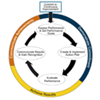 Section
2.0 – Set Facility Policy and Goals Section
2.0 – Set Facility Policy and GoalsThis section deals with determining a goal for the green cleaning and maintenance effort and setting building policies in order to gain support for the effort in terms of cooperation at multiple levels: from janitorial and maintenance staff, to building managers, to outside contractors, to other workers and employees. |
|
 Section
3.0 – Green and Profitable Work Environment Baseline Checklist Section
3.0 – Green and Profitable Work Environment Baseline ChecklistThis section will assist the building manager in determining how the individual building features and the current cleaning and maintenance practices fit in the context of this guide. A simple checklist is included that will help identify areas in need of attention. |
|
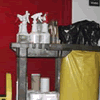 |
Section
4.0 – Identify Opportunities I – Cleaning and Maintenance
and Indoor Air Quality This section includes information on the selection of cleaning products to maintain a healthy building, including how to read a material safety data sheet in order to use each product safely. Details on effective techniques and equipment are given for control of soils, control of biological pollutants, and control of gaseous pollutants, including pest control activities. Information on facility-wide recycling and trash control is also provided. An Appendix (Appendix B) is included that gives specific recommendations when selecting products for particular applications. |
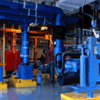 Section
5.0 – Identify Opportunities II – Cleaning and Maintenance
and Building Energy Use Section
5.0 – Identify Opportunities II – Cleaning and Maintenance
and Building Energy Use This section includes information on how routine and periodic maintenance activities can reduce the energy consumption in a commercial building including lighting maintenance, HVAC maintenance, and building envelope maintenance. A description of available resources for financial assistance is also provided. |
|
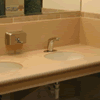 Section
6.0 – Identify Opportunities III – Cleaning and Maintenance
and Building Water Use Section
6.0 – Identify Opportunities III – Cleaning and Maintenance
and Building Water UseThis section deals with strategies to reduce the water consumption both inside the building, as well as outside the building focusing on water use monitoring, water fixture retrofits, and landscape and irrigation practices. |
|
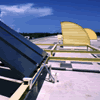 Appendix
A – Opportunities to Consider When Undertaking a Renovation
Project Appendix
A – Opportunities to Consider When Undertaking a Renovation
Project The primary scope of this guide is to focus on procedural modifications to cleaning and maintenance activities, which may involve minor capitol expenditures. However, as most commercial buildings undergo some sort of renovation during their lifetime, this appendix is included to highlight potential opportunities that a building manager may suggest to the renovation design team. |
|
